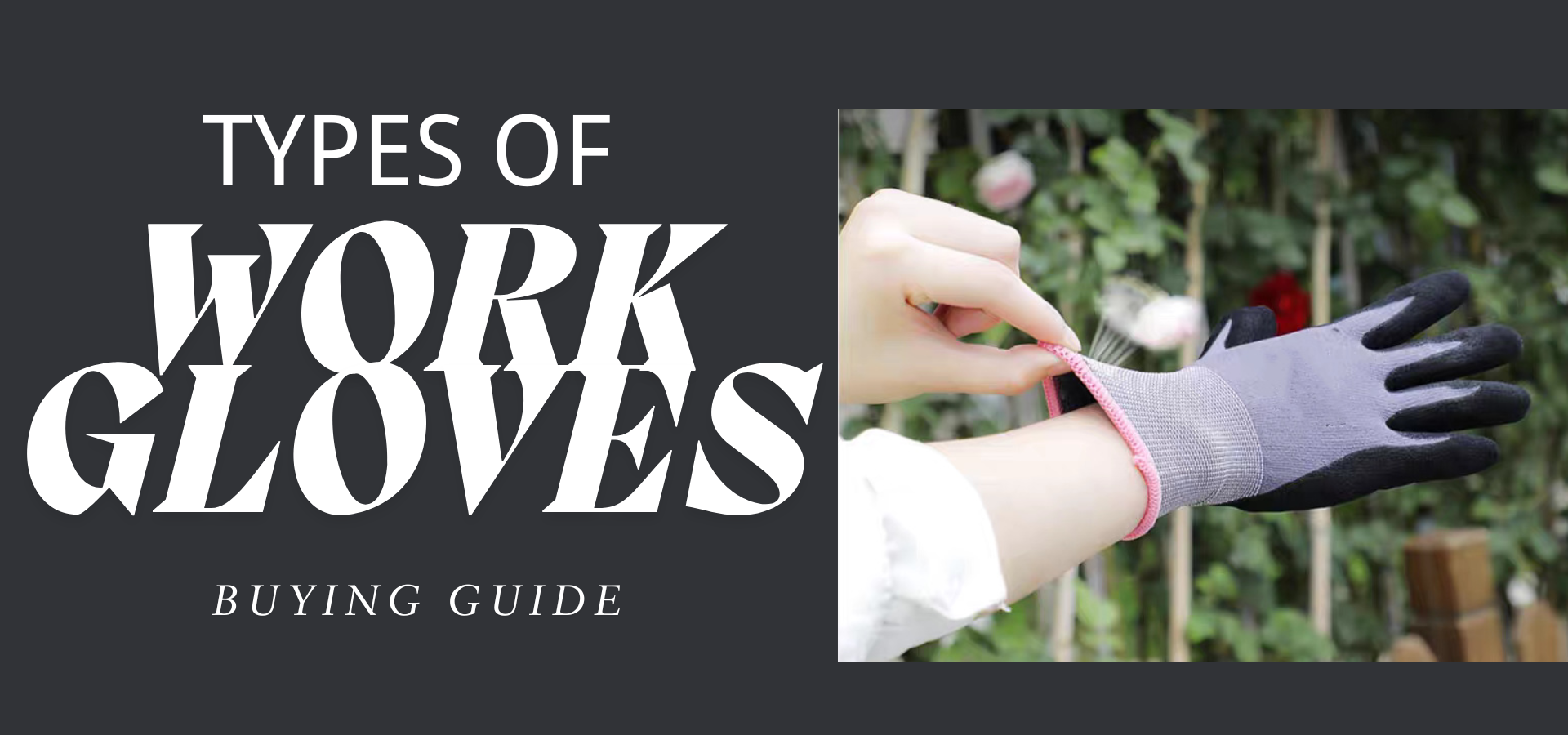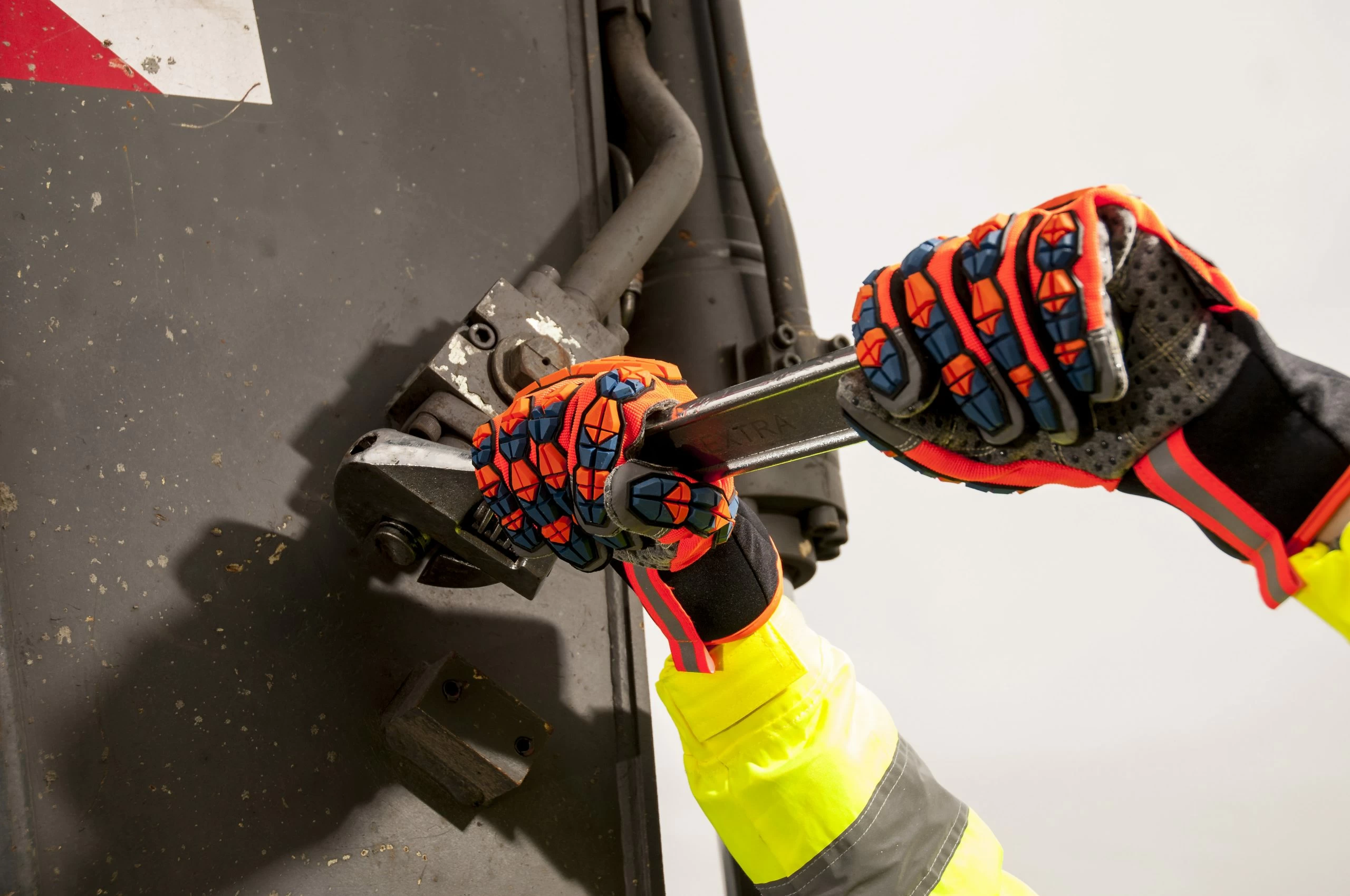 During the work process, the primary key is to ensure the safety of your hands during operation. Without a doubt, choosing a suitable pair of gloves is of utmost importance for you. The first step is to determine the material of the gloves based on their intended use. Different materials and glove coatings provide varying levels of protection, so you need to carefully evaluate the specific protection you require from your gloves. The following article will introduce various types of gloves to help you select the most suitable one.
During the work process, the primary key is to ensure the safety of your hands during operation. Without a doubt, choosing a suitable pair of gloves is of utmost importance for you. The first step is to determine the material of the gloves based on their intended use. Different materials and glove coatings provide varying levels of protection, so you need to carefully evaluate the specific protection you require from your gloves. The following article will introduce various types of gloves to help you select the most suitable one.
Types of Work Gloves
Work gloves are essential personal protective equipment (PPE) in daily work life. When facing tasks that may cause mechanical injuries such as cuts, abrasions, burns, or other hazards, they provide a certain level of protection for your hands.
Work gloves come in various materials and styles. Whether for light-duty or heavy-duty work, they offer exceptional protection. Therefore, selecting the right gloves is crucial for you.

Leather Work Gloves
Leather work gloves are usually made from natural animal hides such as goatskin, deerskin, and pigskin. Due to their excellent abrasion resistance, comfort, and protective performance, along with their softness and elasticity, they are highly favored. Generally, leather gloves have excellent cold resistance, making them suitable for cold weather and environments. They are also ideal for tasks requiring precision or high flexibility.
Thanks to their superior abrasion resistance, tear resistance, and puncture resistance, leather gloves are commonly the best choice for heavy-duty work environments such as construction sites and handling operations. Additionally, leather gloves offer excellent grip, reducing the risk of hand injuries and abrasions in industries such as machining, assembly, and mechanical maintenance. They can also prevent fatigue and hand injuries from prolonged driving in the automotive industry. Moreover, leather gloves perform exceptionally well in dynamic and variable work environments, such as mountaineering and skiing.

Knitted Work Gloves
Knitted work gloves are typically woven from natural fibers such as cotton, wool, and bamboo fiber or synthetic fibers like polyester and nylon. Sometimes, a small amount of spandex is added to enhance elasticity and fit. These gloves are soft, breathable, and comfortable for long-term wear. Their affordability and versatility make them widely popular across various industries.
Knitted gloves are generally lightweight and comfortable, offering some warmth, making them suitable for work in cold environments. They are ideal for jobs requiring dexterity and fine handling but are not suited for heavy-duty tasks such as heavy lifting. They are commonly used in gardening, short trips, and work environments with low temperatures but without mechanical hazards.
Cotton gloves, made from high-quality cotton fibers, are highly absorbent, moisture-wicking, soft, and breathable. They are suitable for light-duty tasks with low-risk environments. Their cost-effectiveness makes them an economical choice, providing reliable hand protection at an affordable price. Undoubtedly, these gloves are a practical option.

Cut-Resistant Gloves
As the name suggests, cut-resistant gloves are specifically designed to prevent hand injuries from sharp objects. They are typically made from high-strength fibers such as Kevlar and ultra-high molecular weight polyethylene, which effectively reduce injuries caused by blades and other dangerous objects.
For jobs that involve handling sharp materials or cutting machinery, cut-resistant gloves are indispensable. They protect hands from injuries in hazardous work environments and can withstand harsh conditions.
Despite their sturdy structure, cut-resistant gloves are generally lightweight, ensuring comfort even with prolonged wear.

Chemical-Resistant Work Gloves
Chemical-resistant gloves are designed to prevent harm from hazardous chemicals, corrosive liquids, and industrial solvents. They are usually made from high-strength chemical-resistant materials such as nitrile rubber, neoprene, polyvinyl chloride (PVC), or latex. To further protect the wrists and arms, these gloves often feature extended safety cuffs.
Chemical-resistant gloves are typically used in environments where exposure to chemicals and hazardous substances is frequent, such as chemical plants, petrochemical industries, medical equipment handling, and pharmaceutical manufacturing.

Cold-Resistant Work Gloves
Cold-resistant gloves are specifically designed for protection in extremely cold environments. To achieve this, materials such as wool and cashmere are commonly used, with external layers made of PVC or neoprene coatings for waterproofing. The palms and fingertips are reinforced to enhance durability and grip performance. These gloves ensure that hands remain warm while performing tasks in low-temperature conditions.
Additionally, a moisture-wicking layer is added to the gloves, keeping hands dry and comfortable even during prolonged wear, reducing discomfort caused by extreme weather.

Disposable Gloves
Disposable gloves are among the best-selling types of gloves and play a critical role in ensuring personal safety, especially in the food and medical industries. They are commonly made from materials such as latex, nitrile, and polyethylene (PE), available in both powdered and powder-free varieties. Their primary function is to prevent cross-contamination and the spread of viruses, bacteria, and other microorganisms.
Disposable gloves are widely favored due to their affordability and ability to provide quick and convenient protection in various environments. They offer comfort, strong elasticity, high tactile sensitivity, waterproof and oil-resistant properties, and short-term resistance to punctures and tears. They are also chemically resistant, making them highly practical. However, frequent replacement is necessary.
How to Measure Glove Size
After understanding the types of work gloves, you may have determined which type is suitable for your work environment. However, before purchasing, you need to know your hand size to avoid accidents caused by gloves that are too large or too small. To determine your glove size, use a ruler to measure the circumference of your hand just below the knuckles.

The values in the table provide approximate measurements. If you need to confirm the exact glove size before purchasing, consult your supplier to avoid any misunderstandings and unnecessary expenses.

Components of Work Gloves
To enhance glove performance, additional components are incorporated. The following are key components of work gloves:
- Palm Coating: An additional layer applied to the palm and fingertips to enhance grip, protection, and durability.
- Shell Material: Extra layers or coatings added to the base glove. Common materials include natural latex, nitrile synthetic rubber, nylon, leather, and polyester fibers. The shell material determines the glove’s mechanical properties and protection level.
- Cuff Styles: Various cuff styles, including knitted wrists, safety cuffs, and gauntlet cuffs, provide different levels of fit and protection.
- Thermoplastic Rubber (TPR): A layer of TPR material added to the palm area for impact protection, absorbing and dispersing impact energy, reducing the risk of hand injuries. It also enhances grip and flexibility, offering vibration-dampening protection in high-impact environments.

Palm Coatings for Work Gloves
To prevent water damage or punctures, work gloves are often equipped with various palm coatings. Different coatings offer different types of additional protection.
- Canvas: Lightweight, durable, and provides basic protection, suitable for general-purpose tasks.
- Latex: Ensures a strong grip even in wet environments and offers water and chemical resistance.
- Leather: Made from pigskin, goatskin, cowhide, etc., providing durability, abrasion resistance, and chemical resistance. Suitable for heavy industries such as construction, welding, and gardening.
- Nitrile: Resistant to chemicals, tearing, oils, and solvents, making it ideal for handling sharp objects and hazardous chemicals.
- Polyurethane (PU): Thin and highly flexible, offering excellent tactile sensitivity, ideal for precision work such as assembly, electronics, and inspection tasks.
- PVC: Prevents penetration of water, grease, and fuels, maintaining grip in oily environments. It is waterproof, oil-resistant, and chemical-resistant, suitable for harsh conditions.

How to Choose the Most Suitable Work Gloves
To select the right gloves, determine their required performance based on your work environment and needs. Confirm the glove size, material, and components, ensuring they meet industry standards. After verifying the glove certification and price, you can choose the most satisfactory work gloves. Ultimately, selecting the right work gloves depends on your specific requirements and the guidance of experienced suppliers.
Conclusion
Choosing the right work gloves requires both your effort and the expertise of professional suppliers. While this may seem challenging, Aibon is here to solve all your problems.
How to Measure Glove Sizes – Source: AIBON
Latex gloves– Source: AIBON
Safety gloves– Source: AIBON
Working gloves– Source: AIBON

